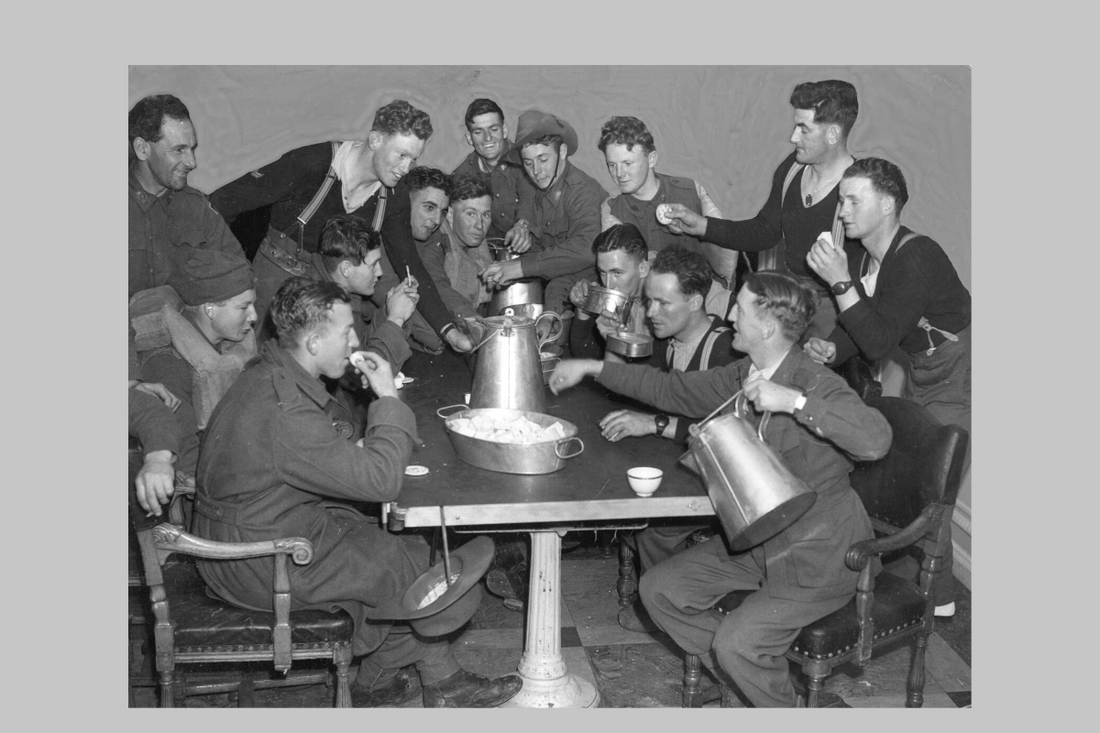A quick look at how coffee become our nation's favourite cup.
There’s no doubt about it that we are a nation of coffee lovers, flat white fans and double-shot topped-up macchiato drinkers. So much so we’ve earned a reputation around the globe as coffee snobs and with good reason.
Coffee culture driven by great-tasting beans, dedicated baristas and the fact that, on average, we drink 1.7 cups a day means we know good coffee. Coffee culture is huge here, most of us start our day with an at-home brew or a quick dash past our favourite local for a quick pick-me-up. We meet over coffee, do business deals, catch up with friends and build communities around cafes.
But coffee wasn’t always part of our culture; it took a while to catch on...
Like much of Australia, our coffee culture is relatively young, however, the need to stay awake is as old as time. The First Nations People of Australia are recorded as using native plants known for their stimulant properties to stay awake. Mainly in regions around QLD and NSW where the “Pituri” plant grows, whose leaves are known for their stimulating properties. As well as in South Australia, where the "Muntries" grow, the leaves were used for similar reasons. While not commonly in use today, we appreciate the dedication to staying awake, and while it’s not coffee per say, the intent is the same right. To stay awake and do all the things! (side note: please don’t try to consume these unless you know how to do so correctly or are guided by someone who does).
That inky black drink known as coffee was first introduced to Australia by the First Fleet, Having collected beans and seeds along the way in Rio, a few were planted at the Government house but failed to thrive in their new environment. But it really didn’t start becoming widely drunk until the 1850s. As let’s face it, the Brits still love a good cup of tea, so it’s hardly unsurprising that coffee didn’t take off with them.
That fact it probably didn’t taste amazing didn’t help. Often cut with chicory or other extras to make it go further, it was brewed by boiling it with things such as milk and mustard, egg shells or even dynamite (now there’s a cup that’d wake you up!)
In the 1850s, a few factors brewed together to give the popularity of coffee a nudge.
First, the gold rush. A surprising driving force behind the spike in popularity of coffee; we can only imagine the need to get there and dig for gold before others did, made staying awake essential.
The Temperance movement was the ofter factor. Driven by the desire to curb anti-social behaviour, this Christian-based movement successfully lobbied for pubs to close at 6 pm, making way for cafes and tea houses to open. As a result, “Coffee Palaces” started to appear and were soon the height of the social scene; one of the earliest was built by the Sydney Coffee Palace Hotel Company, built-in 1878. Grand buildings they were aimed at higher classes of society and allowed women and children inside, unlike pubs.
Coffee didn’t start to get good until the 1930’s when Italian immigrants brought the espresso and European Cafe Culture to our sunburnt land.
Stove-top coffee makers found their way here in luggage, along with beans, grinding, and brewing. This spread from small communities to friends, and coffee became an important way to share a daily moment or catch up with family and friends.
The 1950s saw it hit its stride with thousands of US military personnel passing through and demanding a cup of joe. With newspapers publishing articles about how to grind and brew coffee for visiting service members and driving the need and popularity of the drink.
(photo above shows troops enjoying coffee and biscuits in dining room of troopship after embarkation, 1940s, State Library of Victoria)
The “Flat White” was coined by Aussie barista Alan Preston in 1985 and as a coffee-drinking nation. We made it our own and never looked back.
We even exported flat whites worldwide. Embracing cafe culture, take-away cups and barista training like no other country. Every coffee drinker has their favourite place, the one that does the best cup and then their backup option, i.e. the one that does a good cup if your fave is too busy. Our client’s have their favourite beans, their favourite flavoured coffee’s and their favourite grind style and we make sure that every bean we sell becomes your favourite.
The most recent coffee culture wave is more ethically driven and focused on flavour. In terms of ethics, we love good coffee, but now we also want one grown in good conditions, with workers who get paid well and in packaging as sustainable as possible. Just like our Ethiopian Fair Trade Organic beans.
Keep-cups, bio-capsules (like ours, find them here), and sustainable packaging are all creating change within the coffee industry. Also, decaf is no longer a dirty word, with many of us swapping out one of our daily cups for a decaf one like these in our decaf range.
As for flavour, not only do we want rich deep coffee flavour but the ability to extract and combine it with natural aromas, making flavoured coffee a new favourite. Gone are the days of syrups and chemical additives, todays flavoured coffee beans are decadent treats built on that delicious coffee taste we all love. Find our full range of flavoured beans here and discovered your next level of coffee love.
It’s been quite a journey from traditional means of staying awake to sipping a flat white in an eco-friendly keep cup, and we can’t wait to see where these beans take us as a nation next.
As a nation that loves coffee, we hope over your next cup you take a moment to consider what being an Aussie means to you.

